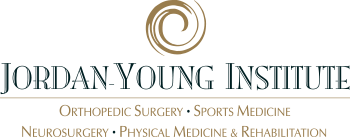Healthcare News
16 Causes of Armpit Pain: When You Need to Worry
Source: Verywell health
Armpit pain can have many causes, ranging from injuries and irritants to infections that cause swollen lymph nodes. Less commonly, the pain—referred to as axillary pain—may be due to an autoimmune or arterial disease, nerve compression, and malignancies like breast cancer.
Understanding the Causes of Knee Pain on the Outer (Lateral) Part of Your Knee
Source: Healthline
An injury or arthritis most likely causes pain outside the knee. A doctor can determine the cause based on your other symptoms and the results of imaging tests.
Normal Hip Range of Motion
Source: Verywell health
Range of motion (ROM) is a measurement of the distance and direction a joint can move to its full potential. Hip ROM is dictated by the ball-and-socket hip joint, which is made up of the femur (thighbone) and pelvis. They fit together in a way that allows for fluid, repeated motion—and a fair amount of wear and tear—but the joint isn’t indestructible.
Surgical Management of Elbow Heterotopic Ossification: Postoperative Outcomes With and Without Continuous Passive Motion Rehabilitation
Source: Science Direct
Continuous passive motion (CPM) has been an accepted method of orthopedic postoperative rehabilitation for decades. However, its efficacy remains disputed and there is a paucity of literature looking at the impact of CPM after operative management of elbow heterotopic ossification (HO). This retrospective study aims to compare long-term clinical outcomes after surgical excision of elbow HO between patients with and without postoperative CPM.
Chronic Adaptations of the Shoulder in Baseball Pitchers: A Systematic Review
Source: The American Journal of Sports Medicine
Understanding clinical and tissue adaptations to the throwing shoulder is important for optimizing injury prevention and rehabilitation programs in baseball players. The purpose of this study was to determine the chronic clinical (range of motion [ROM] and strength) and tissue adaptations of the throwing shoulder in baseball pitchers.
UCL repair with internal bracing may yield faster return to sport vs. Tommy John surgery
Source: Healio
UCL repair with internal bracing yielded faster return to practice and faster return to competition vs. UCL reconstruction. Both UCL repair and reconstruction had high rates of return to sport.
The effects of regular training on spinal posture: a fitness and bodybuilding perspective
Source: frontiers in Physiology
Regular training is associated with better postural alignment, decreased risk of musculoskeletal problems, and improved overall physical function. The aim of this study was to examine the changes in the spinal postures of individuals who regularly engage in fitness and bodybuilding training.
How do you treat rotator-cuff tears?
Source: Medical Xpress
Shoulder symptoms led to an average of 9.6 million physician visits in 2015 and 2016 in the United States. The most common cause of those shoulder symptoms? Rotator-cuff disorders. Nonoperative treatment, such as physical therapy, is the typical approach to treating rotator-cuff tears. However, surgery is considered in certain patients whose rotator-cuff tears don't resolve with nonoperative treatments.
How to identify and treat inner knee pain
Source: Medical News Today
The inner or medial knee refers to the part closest to the other knee. Injuries and arthritis are two possible causes of inner knee pain. Treatment options depend on the cause and include warm or cold packs, exercise, and medication.
Boost Your Mobility With These Gait Training Exercises
Source: Verywell health
Gait training exercises are movements designed to help improve strength, balance and coordination when walking. They may be part of a physical therapy program for a person recovering from a stroke, an injury, or surgery, as well as those dealing with a chronic condition that affects their ability to walk.
